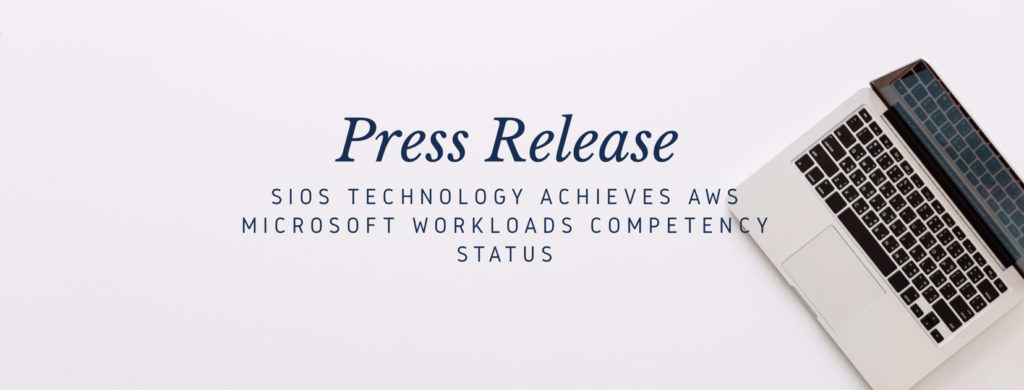| July 14, 2019 |
SIOS Technology Achieves AWS Microsoft Workloads Competency Status
|
| July 13, 2019 |
SQL Saturday NYCSQL Saturday NYCDate: October 5, 2019 Location: New York SQLSaturday is a free training event for Microsoft Data Platform professionals and those wanting to learn about SQL Server, Business Intelligence and Analytics. This event will be held at: |
| July 12, 2019 |
SQL Saturday Boston #877SQL Saturday Boston #877Date: September 14, 2019 Location: Burlington, MA SQLSaturday is a free training event for Microsoft Data Platform professionals and those wanting to learn about SQL Server, Business Intelligence and Analytics. This event will be held at: |
What To Know About Moving Your SQL Server 2008/2008 R2 to AzureMoving your SQL Server 2008/2008 R2 to Azure – Everything Enterprises Need to Know!Date: July 30, 2019 Location: Webinar Support for SQL Server 2008 and 2008 R2 ends July 9th. What does that mean for your Enterprise workloads? Should you take advantage of Microsoft’s free security updates by moving to Azure or Azure Stack? What are all of your options? What should you do? Is there still time? Join Microsoft SQL Database Senior Program Manager, Mine Tokus, and SIOS Technical Evangelist and Microsoft Cloud and Datacenter Management MVP, Dave Bermingham, as they cover all of your remaining questions regarding the EOS for SQL Server 2008/R2; what to expect for your SQL Server workloads after EOS, expectations for a move to Azure; Availability and Disaster Recovery options and more. Tuesday, July 30, 2019 The Webinar is presented by Dave Bermingham, Microsoft Cloud and Datacenter Management MVP, and SIOS Technology Corp Technical Evangelist and Mine Tokus, Microsoft Senior Premier Engineer.
|
|
AWS Summit NYCAWS Summit NYCDate: July 11, 2019 Location: New York City, NY AWS Global Summits are free events that bring the cloud computing community together to connect, collaborate, and learn about AWS. Summits are held in major cities around the world, and attract technologists from all industries and skill levels who want to discover how AWS can help them innovate quickly and deliver flexible, reliable solutions at scale. When attending an AWS Summit, you will hear from AWS Leaders, Experts, Partners, and Customers. Learn by attending technical breakout sessions, demonstrations, hands-on workshops, labs, and team challenges. Network with AWS Partners and your peers in our Partner and Solutions Expo. SIOS is an exhibiting Bronze Sponsor in booth 123 |
 SIOS Technology Achieves AWS Microsoft Workloads Competency Status
SIOS Technology Achieves AWS Microsoft Workloads Competency Status